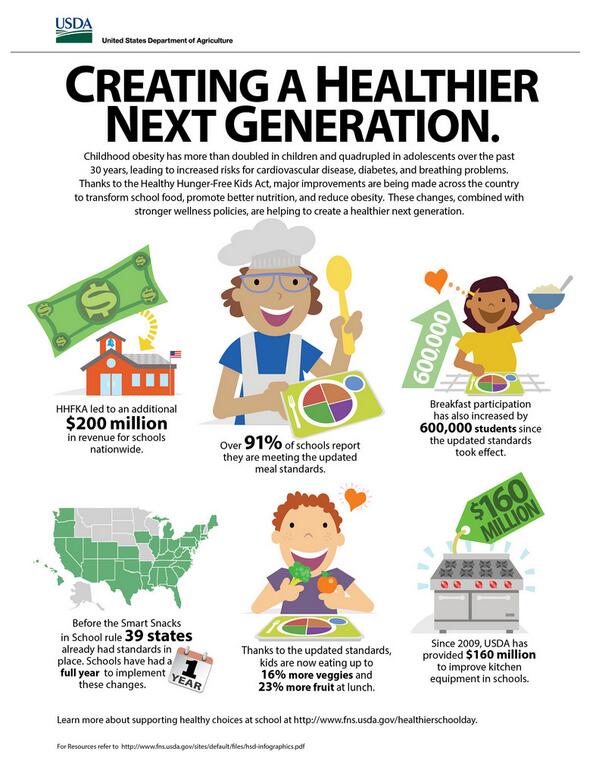
The Healthy Hunger Free-Kids Act wanted to focus on child nutrition and lunch programs in school across the country. Many nutrition standards that were changed since the law was implemented and also more government spending was used. I believe that the Act is working because I do think that it has impacted the country of how nutrition is important and it affected children to actually eat more fruits and vegetables.
I am not looking at this act as a politician but as a citizen and a student who experienced eating school lunches. As a student, I ate school lunches almost every day and I recall there was improvements when the lunches are being served. Instead of only picking one fruit you can pick two fruits and instead of a main entrée you can have a chicken salad as a main entrée. I mostly stratified with the lunches that are being served as there more options for me to choose and I was aware that the foods that I am eating was more healthier than eating fast foods.
The Act is working because the USDA was able to make regulations on improving the lunches using the National School Lunch Program. Since 2010, the USDA made schools to have fresher meals and more serving of fruits and vegetables. This was the first one of the first initiative that the Act wanted to do and if this was not implemented immediately, the chances of schools giving more serving of fruits and vegetables will be small just before the Act was implemented.

Another factor that the Act is working because it can help childhood obesity. If children are exposed on eating fruits and vegetables, it can affect them to eat healthier foods. Childhood obesity has become a problem across the United States and the Act is taking action to lower the childhood obesity statistics. Reports indicated that the childhood obesity was about 17 percent in 2012 but since the Act was implemented there was a small decrease. Even though it is just a small decrease, through the Act’s healthier lunch regulations truly helped the results.
A third factor that the Act is working because it not just looking out to school lunches but also to several programs like the Special Supplemental Nutrition Program for Women, Infants and Children (WIC), the Summer Food Service Program, and the Child and Adult Care Food Program. These programs not only focuses on children but also for adults. The act has helped many families through their programs by assisting care centers, programs for pregnant women about taking care of infants and nutritional care, and assisting low-income children to still have nutritious meals even though they are in summer vacation.
Although I think the Act is beneficial and it is working I do have concerns about how children are throwing their lunches away and it is impacting government spending of the act. As children will throw away their foods because they simply don’t want the food that is being served in their school cafeteria, budgets of school is most likely to be wasted and it doesn’t benefit both the schools and students.
Overall, citizens across the country should see how much improvement that the Healthy-Hunger Free Kids Act has changed child nutrition for the past 5 years. Parents should know that the government is concerned about the wellbeing of young citizens of the country especially what they eat. The Act’s purpose was to have children to avoid the childhood obesity and childhood hunger.




